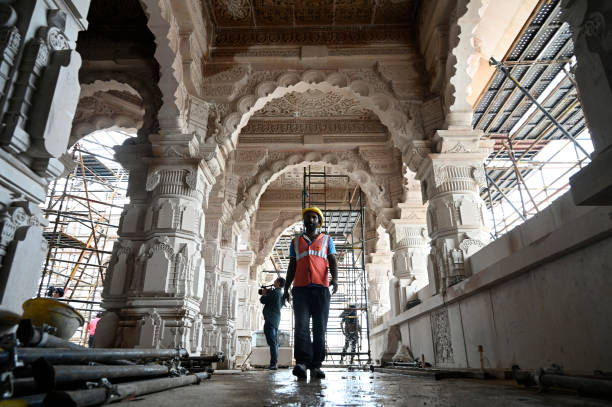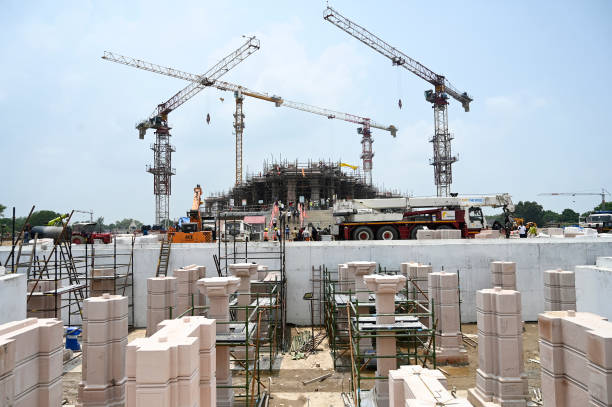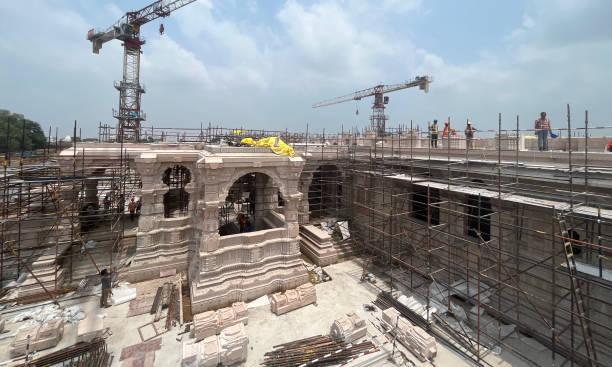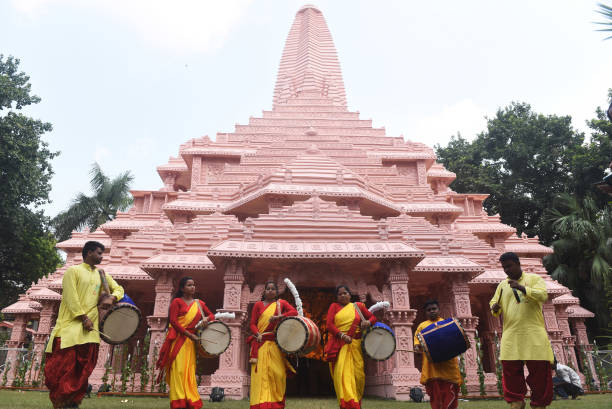The Ayodhya temple, set to be a significant landmark in the tapestry of India’s religious heritage, is on the brink of unveiling. As the Ram Janmabhoomi Mandir prepares to open its doors in the ancient city of Ayodhya, the nation stands at the cusp of witnessing history intertwine with contemporary aspirations. Dive into the layers of its historical, political, and cultural significance in the article below.

Ayodhya Temple: donations amounting to about 30 billion rupees ($361 million) have funded;
In the ancient city of Ayodhya, a major promise made by Prime Minister Narendra Modi is about to come to fruition. A new, ornate Hindu temple, known as the Ram Janmabhoomi Mandir, is slated for inauguration in January, situated on a historically disputed piece of land.
The Historical Significance: The site was originally home to the Babri Masjid, a mosque constructed in 1528. Its demolition in 1992 by right-wing Hindu groups led to nationwide communal tensions, resulting in the loss of over 2,000 lives and triggering a wave of sectarian violence, reminiscent of the aftermath of India’s partition in 1947.
Hindu nationalists, with PM Modi’s BJP at the forefront, have long campaigned for a temple at this location. According to believers, this is the birthplace of Lord Ram, a prominent deity in Hinduism.

Legal Resolution and Political Impact: In 2019, the Supreme Court of India permitted the construction of the temple at the site. This decision was welcomed by Hindu nationalists and seen as a significant win for the BJP. PM Modi hailed the verdict, emphasizing its role in paving the way for a “new India.”
The timing of the temple’s inauguration, close to the upcoming national elections, might appear politically convenient. However, Nripendra Misra, the chairman overseeing the temple’s construction, refutes these claims. He points to the sun’s southern position in January as an auspicious time for the temple’s opening.
Design and Structure: Larsen and Toubro, an Indian engineering group, is spearheading the construction. The temple is being built on a 2.67-acre site within a larger 70-acre complex. Inside, gold bars and intricate artworks celebrating India’s diversity will embellish its walls and chambers. Notably, the government hasn’t financed the construction. Instead, donations amounting to about 30 billion rupees ($361 million) have funded the initiative.

Economic and Social Impact on Ayodhya: The city, already a significant pilgrimage site, is preparing for an influx of visitors. Infrastructure enhancements include a new international airport and renovations to roads and railways. Analysts believe these developments, combined with religious sentiments, may influence voting patterns, especially in the state of Uttar Pradesh.

The inauguration of the Ram Janmabhoomi Mandir in Ayodhya encapsulates a harmonious blend of India’s rich historical tapestry with its present-day aspirations. While the temple holds deep religious significance for many, it is also a symbol of the nation’s ability to reconcile its past with its future ambitions. As Ayodhya prepares to welcome pilgrims from around the world, it becomes imperative for India, as a whole, to embrace this development as a step towards unity, reflecting on shared histories and working collectively towards a more inclusive future.





